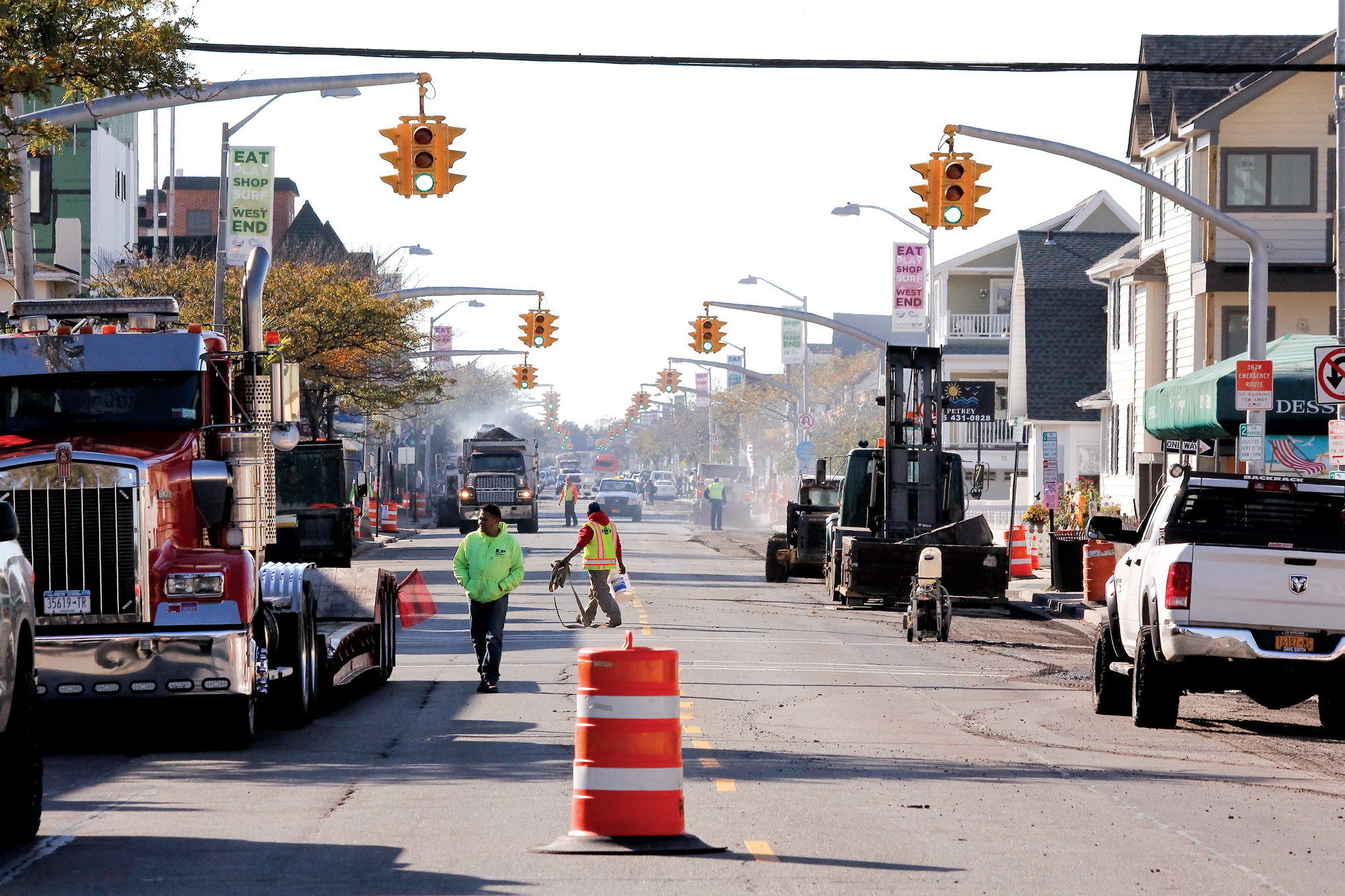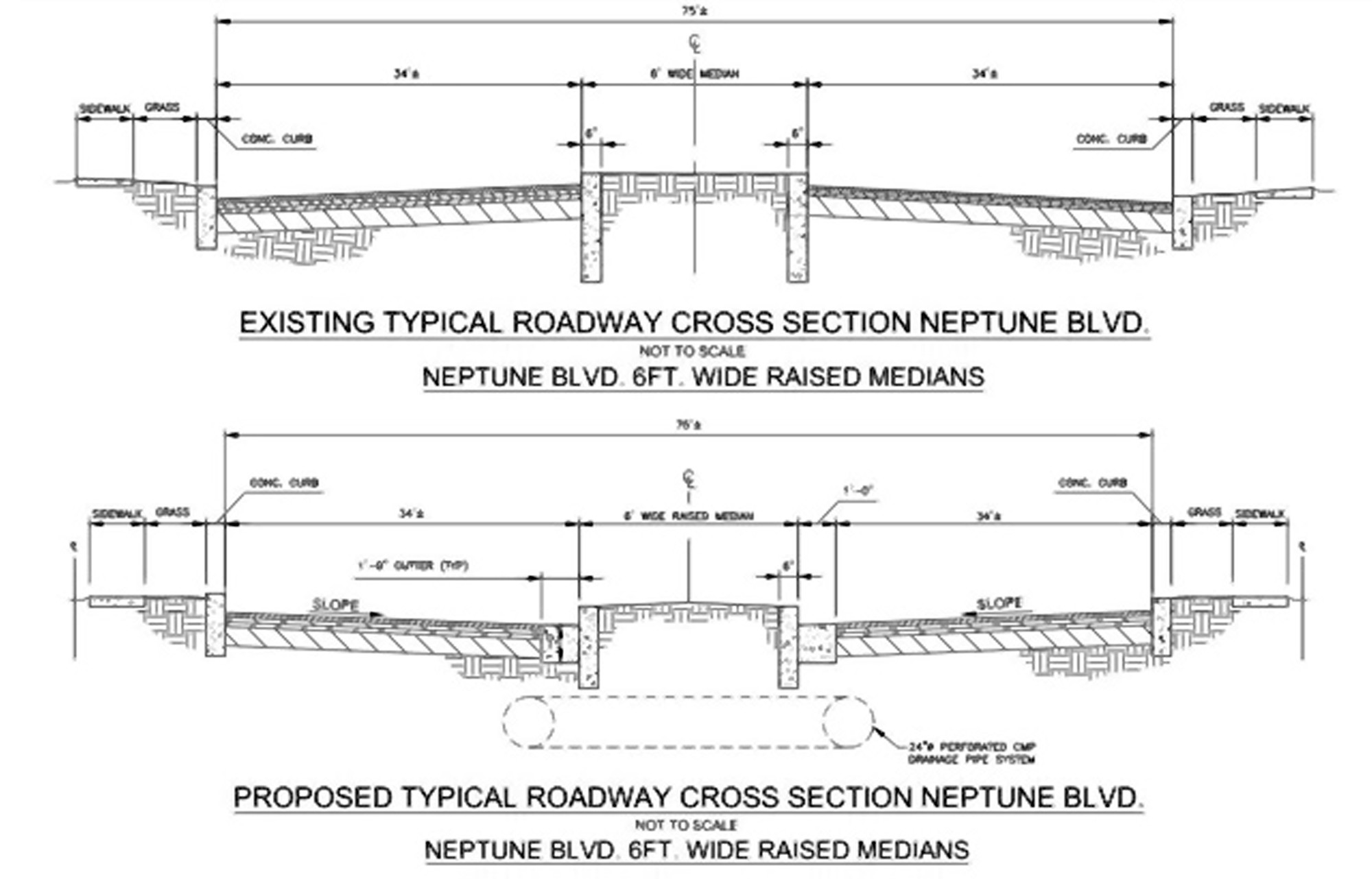Massive street repaving projects are under way
Will reduce storm-water flooding, officials say
The city is undertaking a number of road-repaving projects, including the reconstruction of Neptune Boulevard, north of Park Avenue, to Reynolds Channel, in order to increase resiliency and mitigate storm-water flooding.
Department of Public Works Commissioner Jim LaCarrubba gave a presentation on the upcoming projects at the Oct. 20 City Council meeting, and the council passed resolutions to move ahead with construction on Neptune as well as the parking lot on Maryland Avenue, north of Beech Street. LaCarrubba called the Neptune Boulevard project a major factor in reducing future flooding, and one of the largest road construction initiatives the city has ever tackled. It includes many of the usual improvements the city makes while repaving streets, when also incorporating new ideas to better manage storm water.
“We’re replacing the pavement and curbs and sanitary sewer infrastructure — all of that we do on every road project,” LaCarrubba said. “What makes this one different and unique is we’re going to be raising the sidewalks and changing the pitch of the roadway so that everything pitches toward the center.” This will prevent water from running toward the curbs, and residents’ homes, he explained.
The construction also includes the installation of retention chambers under the center medians that will act as a first line of defense, filling up with storm water instead of allowing it to run into the bay.
“It’s going to give the water a chance to infiltrate right into the ground,” LaCarrubba said. A special stone blend and filter fabric will facilitate the process. “When the water hits a certain level in the chambers, they’ll overflow into an outflow and run into the channel as a last resort. We’re basically building in a series of redundancies to our storm-water system that will help mitigate flooding.”
The retention chambers and drainage system will have a volume of more than 38,000 cubic feet, including piping, and be equipped to handle a two-year storm — which would produce 3.43 inches of rainwater a day, officials said.

 64.0°,
Mostly Cloudy
64.0°,
Mostly Cloudy 







